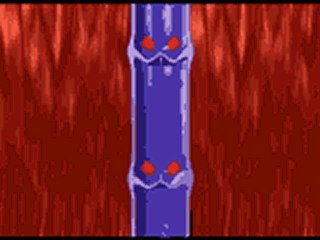Vein Treatment
Vein Treatment
Our Services


Vein Treatment in Amarillo, TX
WHAT IS VEIN DISEASE?
Veins are the blood vessels that return blood to the heart from the body. To overcome the force of gravity, veins use one-way valves which open to allow blood flow to the heart, and close to prevent “reflux” of blood back to the body. When these valves fail to function, or if the vein is damaged so the valves do not completely close, blood can begin to pool in the vein, causing a variety of vein complications.




Varicose Veins & Vein Disease
WHAT ARE THE DIFFERENT TYPES OF DISEASE?
Spider veins are the small, thread-like colored veins that are most often seen on the surface of the skin. While many people seek treatment for spider veins for cosmetic reasons, spider veins can also result in substantial discomfort, requiring therapy.
Varicose veins are the large, "rope-like" veins which are often ¼" or larger in diameter. Varicose veins generally grow in size over time and can result in substantial pain and complications if not treated.
Vein Treatments in Amarillo, TX
WHAT ARE THE TREATMENT OPTIONS FOR VEIN DISEASE?
Depending on the type and stage of vein disease, there are many different treatments. Your physician can explain all of the options. The following are common treatments performed for vein disease:
Compression Stockings although they will not eliminate varicose veins, compression stockings can help relieve vein disease symptoms. The compression stocking will assist the leg in the pumping of blood back to the heart.
Sclerotherapy used commonly for spider veins and small varicose veins, sclerotherapy involves injecting a small amount of liquid into the diseased vein. The sclerosing liquid acts upon the lining of the vein to cause it to seal shut, eliminating the vein completely. Read Me
Radiofrequency (RF) Therapy this procedure is a minimally invasive alternative to traditional vein stripping. It’s done by inserting a very small tube called a catheter into the vein and delivering RF energy to the vein wall. This causes the vein to shrink, collapse and seal shut. Once it’s sealed, healthy veins take over and redirect blood flow back toward the heart. The RF procedure can be performed under local anesthesia in a physician’s office, and most patients return to normal activity within a day.
Clairvein Therapy this catheter has a unique rotating tip that rotates inside the vein and delivers an FDA approved medicine which causes the incompetent vein to close. This procedure does not require anesthesia.
Endovenous Laser Therapy during endovenous laser therapy, a thin fiber is inserted into the diseased vein, generally through a small puncture in the leg. The physician then delivers laser energy through the fiber which causes the vein to close as the fiber is gradually removed. Endovenous laser therapy can be performed in a physician’s office in less than 20 minutes, and the patient is encouraged to walk immediately following the procedure. Read me
If the vein is closed by the treatment, where does the blood go?
Because there are many veins in the leg, the blood that would have flowed through the closed vein simply flows through other healthy veins after the procedure. The loss of the diseased vein is not a problem for the circulatory system.
What are the complications of vein treatment?
Fortunately, sclerotherapy and endovenous vein ablation have rarely been associated with any serious complications when properly performed. Common minor complications of these procedures include bruising, mild itching, tingling, mild tenderness in the treated leg for up to two weeks after the treatment.
How do I know if I have vein disease?
Most vein disease can be seen by looking at the size and color of the vein at the skin surface. In some cases, the diseased vein may be deeper in the body and not visible through the skin. As a result, paying close attention to other symptoms is important in diagnosing vein disease. Many patients experience cramping, aching, burning, itching, soreness or “tired” or “restless” legs, especially in the calf muscles. If you experience these symptoms, your physician can perform a test to determine if you have vein disease.
Will insurance cover the treatment?
Many insurance companies cover the treatment of vein disease that is associated with pain and other complications, but individual insurance companies may limit the types of therapy that are covered.




Laser Spider Vein Removal
Are spider veins and broken capillaries keeping you from looking your best? Wherever they are, on the face or on the legs, we have the solution. Our state-of-the-art Fotona Laser Vein Treatment is fast and virtually painless. And best of all, it works. In just minutes we can eliminate a condition that has been bothering you for years. The process of removing a spider vein uses a laser beam that is pulsed onto the veins in order to seal them off, causing them to dissolve.




